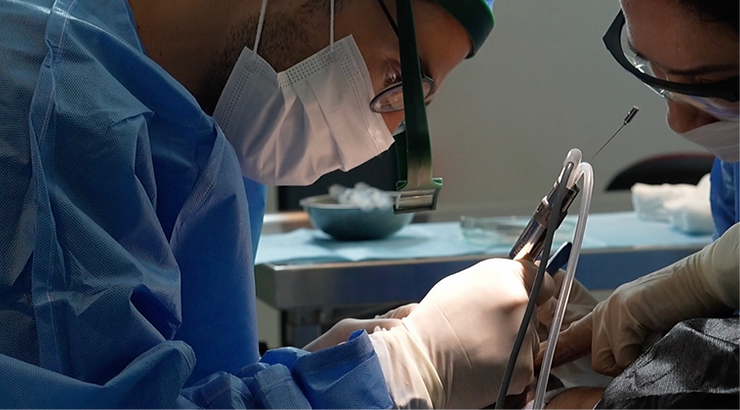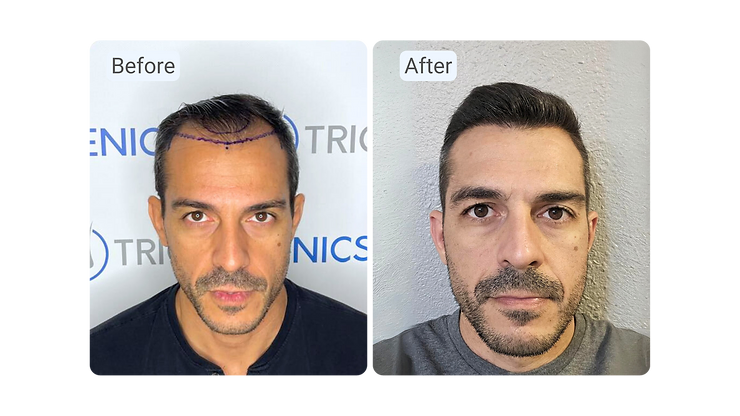When considering a hair transplant, you might notice a significant range in pricing—especially when comparing clinics across different countries. Medical tourism has made it easier to access cheaper hair transplants, with countries like Turkey becoming popular destinations for those looking to save money. However, while it’s tempting to opt for lower-priced options abroad, it’s important to understand the trade-offs. Some clinics, especially those in countries with fewer medical regulations, may offer lower prices, but this can come at the cost of quality and safety. In this article, we’ll explore the factors that impact hair transplant costs and why choosing an expert surgeon and regulated clinic can make all the difference.
Expertise Matters: Reducing Donor Area Scarring
One of the main reasons to invest in a highly skilled hair transplant surgeon is to minimize scarring in the donor area. Hair transplants involve extracting hair follicles, and the technique used can greatly affect the appearance of your scalp post-surgery.
For example, during a Follicular Unit Extraction (FUE), a cylindrical tool called a punch is used to remove hair follicles from the donor area. If the punch is perfectly aligned at 90 degrees with the hair follicle, the resulting scar is minimal—typically the same size as the punch. However, if the hair follicle grows at an angle and the punch is not adjusted properly, the scar can be up to 100% larger, creating an elliptical scar. The more the angle deviates from 90 degrees, the larger the scar becomes.
A skilled surgeon can mitigate this by using advanced techniques such as tumescent solutions to adjust the hair angle or specialized equipment that extracts follicles at an optimal angle. These small details can dramatically reduce scarring, leading to better aesthetic results. Less experienced practitioners may not take these precautions, increasing the likelihood of visible scarring and a less favorable outcome.
Advanced Technology and Equipment

High-quality hair transplants often involve the use of cutting-edge technology. Devices like the Trivellini Mamba FUE System are designed to extract hair follicles with minimal trauma, but they require extensive training and experience to use effectively. This level of precision equipment comes at a cost but ensures better graft survival and a more natural look.
Cheaper clinics may rely on outdated or basic tools that increase the risk of damaging hair follicles during extraction, leading to lower graft survival rates and less desirable results.
High-Quality Graft Storage

Once hair follicles are extracted, they must be stored properly to ensure survival before being implanted. Budget clinics may use saline or Ringer’s lactate solutions, which are adequate but far from optimal. In contrast, top-tier clinics use HypoThermosol with ATP, a solution that significantly improves follicle survival, sometimes increasing success rates by up to 10 times. However, this specialized solution is more expensive, contributing to the higher cost of premium hair transplants.
The Team Behind Your Transplant
It’s not just the equipment and techniques that matter—who performs your transplant is crucial. In some clinics, less experienced technicians or nurses handle large parts of the procedure, which can lead to inconsistent results. At Trichogenics, a highly qualified medical doctor, often a board-certified surgeon, will oversee and perform most or all of the procedure, ensuring a higher standard of care.
A skilled team, often working under digital microscopes, carefully dissects and places each hair graft to create the most natural hairline possible. These specialists, along with the use of advanced technologies, contribute to the overall cost but also ensure superior results.
A Natural and Lasting Outcome

Ultimately, hair transplant costs reflect the quality of care, expertise, and technology used throughout the process. Choosing a qualified surgeon with experience in minimizing scarring, utilizing advanced tools, and ensuring high graft survival rates means you’re investing in a more natural, long-lasting result.
While the initial price tag may be higher, a properly executed hair transplant reduces the likelihood of complications, unsatisfactory results, or the need for corrective surgeries down the road. Remember, a hair transplant is not just a cosmetic procedure—it’s a long-term investment in your appearance and confidence.
What About Medical Tourism?
Countries like Turkey have gained popularity as destinations for medical tourism, especially for hair transplants. Turkey, in particular, offers lower prices, making it an attractive option for many. However, it’s important to be cautious when choosing to undergo a procedure abroad. In many Turkish clinics, the transplant process is often performed by technicians or nurses with little to no direct involvement from a doctor. This can increase the risk of inconsistent results and complications, as patients may not even meet the doctor before surgery.
While the cost savings can be tempting, it’s crucial to consider the quality of care and the expertise of the practitioner. Without proper regulations, there’s a higher chance of receiving a lower-quality procedure, which could lead to unsatisfactory results.
Greece: A Regulated Alternative
For those considering medical tourism but looking for a safer, more regulated option, Greece offers a compelling alternative. Greek clinics follow strict regulations that ensure only medical doctors perform hair transplant procedures. In Trichogenics Greece, our doctors are involved in every stage of the process, from consultation to surgery, and post-surgery follow up, providing a higher standard of care and reducing the risks associated with technician-led procedures found in other countries.
Conclusion: You Get What You Pay For
Hair transplants are not all created equal, and price differences often reflect the quality of the procedure. From minimizing scarring and utilizing advanced technology to ensuring high graft survival rates and working with a skilled team, the cost of a premium hair transplant is justified by the long-term results. When choosing a clinic, make sure you understand what you’re paying for—and why it’s worth investing in an expert.




